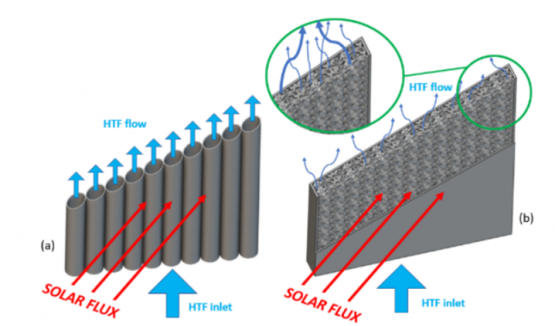Highly efficient planar absorbers using Triply periodic minimal surface (TPMS) porous structures
Activity carried out by: Mortazavi Arsham
TPMS are characterized by the absence of sharp edges and by a gradual enlargement or contraction of the flow path. This curved topology allows for smooth flow through the channels and is supposed to theoretically minimize the pressure drop. Moreover, the interpenetrating structures of TPMS result in a favorable increase in turbulence and consequently in improved heat and mass transfer [1]. TPMS are mathematically defined surfaces with complex topologies that split space into two or more interlocked and connected domains, which promotes the heat transfer from the heated side. Solar receivers with the maximum heat flux of more than 1 MW/m2 are among the excellent candidates for application of TPMS due to the high potential for heat removal.

Figure 1. Two billboard receivers equipped with (a) tubes and (b) TPMS
References
[1] M. Khalila, M.I.H. Alia, K.A. Khana and R.A. Al-Rub, "Forced convection heat transfer in heat sinks with topologies based on triply periodic minimal surfaces", Case Studies in Thermal Engineering 38 (2022)

